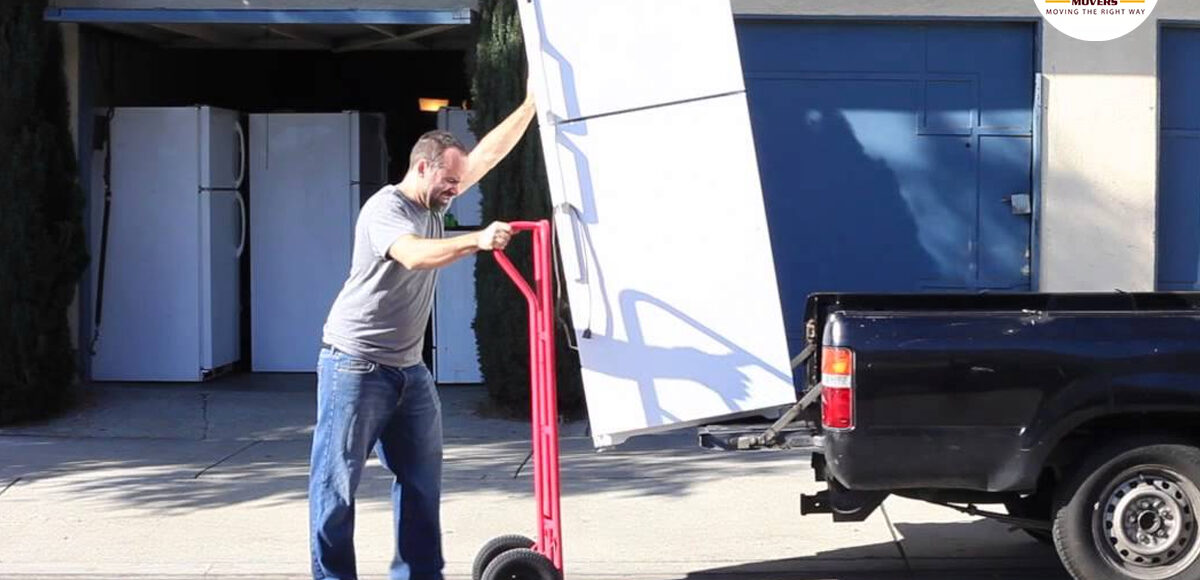
Safely Move Your Fridge with Alliance Movers
Are you planning a move and wondering about the safety of transporting your refrigerator on its side? At Alliance Movers, we understand the concerns and questions that arise when relocating household appliances. Below, we will address all your queries regarding transporting a refrigerator on its side. If you are moving locally or long-distance, we will provide valuable insights and best practices. Through this, we ensure a successful and damage-free move. Read on to discover everything you need to know about transporting a refrigerator on its side.
Can You Transport a Refrigerator on Its Side?
Transporting a refrigerator on its side is generally not recommended. Refrigerators are designed to operate in an upright position. Tilting refrigerators on their side can cause damage to their components. However, there are certain circumstances where transporting a refrigerator on its side is necessary. Let’s explore those situations in detail.
Short Distances and Time Constraints:
If need to transport your refrigerator a short distance and you cannot position it upright, there are precautions you should take. Keep the below mentioned guidelines in mind:
Limit the duration: Ideally, transport the refrigerator on its side for no longer than 15-30 minutes. Extended periods of tilting can lead to compressor oil leakage and potential damage to the cooling system.
Secure the doors: Use straps or bungee cords to tightly secure the refrigerator doors. This prevents them from swinging open during the move, reducing the risk of damage to the door hinges or seals.
Allow for stabilization: Let the refrigerator stand upright for at least two hours before plugging it. This allows the refrigerant to settle back into its proper position. This will ensure the best cooling performance.
Long-Distance Moves:
It is strongly recommended to transport the refrigerator in an upright position in long-distance moves. The sensitive components of a refrigerator can be easily damaged if the unit is tilted for an extended period. The component can be the compressor and cooling system. Follow the below steps to ensure a safe and hassle-free move.
Plan ahead: Make arrangements to rent or borrow a truck with adequate space and tie-downs to secure the refrigerator in an upright position. A well-secured refrigerator reduces the risk of tipping over or sliding during transportation.
Professional movers: Consider hiring experienced movers who specialize in appliance transportation. They possess the knowledge and equipment necessary to handle your refrigerator with care throughout the journey, minimizing the risk of damage.
Prepare the refrigerator: Before moving, empty the contents of the refrigerator and freezer compartments. Additionally, defrost the unit to prevent any excess moisture or ice buildup. Secure all movable parts, such as shelves and drawers, and tape the doors shut to prevent them from accidentally opening during transport.
Best Practices for Refrigerator Transportation:
To ensure the safe transport of your refrigerator, regardless of the distance, it is essential to follow these best practices:
Keep it upright: Whenever possible, transport the refrigerator in an upright position. This is the safest and suggested transportation method. An upright position ensures that the internal components reducing the risk of damage. The component can be the compressor, condenser, and evaporator, remain undisturbed.
Secure properly: Use high-quality straps, ropes, or bungee cords to secure the refrigerator in place, minimizing any potential movement or shifting during transit. Ensure that the straps are tight but not excessively tight to avoid causing damage to the appliance.
Protect the exterior: Wrap the refrigerator with protective blankets or bubble wrap to prevent scratches and minimize the risk of damage during handling and transportation. Secure the protective covering with tape or straps to keep it in place.
Choose a suitable vehicle: Select a vehicle that can accommodate the size of your refrigerator while providing a smooth and steady ride. Opt for a truck or van with a flat and sturdy cargo area, equipped with proper tie-down points to secure the refrigerator firmly.
Allow for ventilation: Proper ventilation is important during transportation to prevent moisture buildup. Avoid sealing the refrigerator completely, as this can lead to condensation and potential damage. Leave some gaps or openings to allow air circulation.
Conclusion:
Transporting a refrigerator on its side should only be considered as a last resort when no other options are available. While short-distance moves may allow for temporary tilting, it is crucial to minimize the time spent in this position and follow the recommended precautions. For long-distance moves, always transport the refrigerator in an upright position to avoid potential damage to the cooling system. Prioritize the safety and well-being of your appliance by planning ahead, hiring professional movers, and properly preparing the refrigerator for transportation.
At Alliance Movers, we understand the complexities of moving and transportation. If you require professional assistance with transporting your refrigerator or any other appliances, our experienced team is here to help. Contact us today for reliable and stress-free moving services. Your refrigerator is in safe hands with Alliance Movers.

Leave a Comment